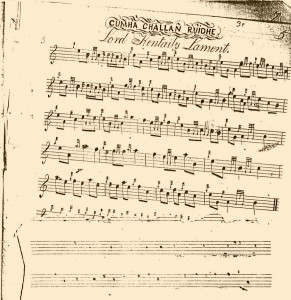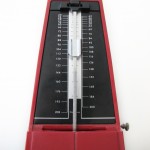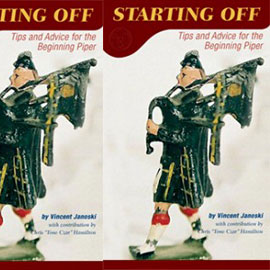5 Steps to Building Your Bagpipe Music Repertoire
 Developing one’s musicianship as a solo bagpiper or pipe bandsman can be hard work, and it’s easy to fall back on the competitive music that demands so much of our time to polish. But, as musicians, we owe it to ourselves to develop a broader view. Do you have a set of non-competitive, non-competitive material that you can perform for 8 to 10 minutes at a stretch? Do you have a list of favorite marches, reels, jigs, etc.? If your answer is “no,” to either of these questions then it is time you begin the process of constructing personal tune sets within your playing ability that you can rattle off whenever the urge or the opportunity hits.
Developing one’s musicianship as a solo bagpiper or pipe bandsman can be hard work, and it’s easy to fall back on the competitive music that demands so much of our time to polish. But, as musicians, we owe it to ourselves to develop a broader view. Do you have a set of non-competitive, non-competitive material that you can perform for 8 to 10 minutes at a stretch? Do you have a list of favorite marches, reels, jigs, etc.? If your answer is “no,” to either of these questions then it is time you begin the process of constructing personal tune sets within your playing ability that you can rattle off whenever the urge or the opportunity hits.
Your personal music list provides you with an expression of personal taste and style in a way that playing competitive material (band or solo) does not. After all, it is your choice how you wish to spend your personal playing time, why not spend it playing tunes you like? Not only will your understanding of the various types of tunes improve, but so will your sight reading skills and your overall artistry on the instrument.
So, how do you get there? If all you’ve got are competitive MSRs, how do you go about building a personal repertoire of music? The steps below are excerpted from an earlier post “The Music Is Yours,” but they stand on their own as an effective guide to growing your own personal body of music.
Think Small. Small reels, strathspeys, two-parted quick marches and jigs, they are the true core of the piper’s repertoire. And there is a gazillion of them, and some really exciting stuff. The potential combinations of tune sets are endless, and spending time learning these types of tunes and constructing new sets is a creative exercise that will make you a better musician. And let’s face it, these tunes are easier and more fun to play! A good place to start is right here perusing “Small Tunes.”
Expand Your Music Library. Build a strong personal library of music collections. Get in the habit of acquiring tune books—new and old. The expense is worth it. If you buy books over time, before you know it, you will be surprised at the breadth of material that is suddenly at your fingertips. In the days before the competition boards took control of our repertoire, the pipers of old played and composed small tunes to play for entertainment. These tunes found their place in the old collections such as Ross, Gunn, and Glen, and these are starting to see “print” again thanks to publishers such as Ceol Sean.
Study. Spend time with your books. Once you’ve amassed your library and are “thinking small,” spend study time with your collections armed with a practice chanter and a pad of sticky notes.
Work through humming, singing, or playing the first few phrases of random tunes. A tune will probably “click” with you in the first few bars. If something does click, work through the whole piece and decide if it is a “keeper” or move on to another. By the end of your study session, your book or books should be flapping with dangling sticky note flags.
Spend enough time doing this, and any difficulties you have with sight reading music will vanish. As your skills build, you will be able to digest and rattle off the basic melody of any tune when seeing the music for the first time. Not only that, you will become more familiar with the phrase patterns and rhythms found in various types of tunes.
Listen. As you flag tunes, listen for similarities in the melody lines or rhythm patterns in certain tunes. Pay attention to similarities or compatibilities in major key notes and pulses. Mark some of these tunes for possible combination and experimentation in a future set.
Listen to your personal CD or digital music library—traditional celtic music, straight bagpiping—and notice the tune types the bands and soloists are putting together. Ask yourself: Why do these tunes sound so good together? What is exciting about them? The answers will condition you to think along the same lines so that you will instinctively combine compatible tunes.
Experiment. Once you have a handful of small tunes, start playing them together in different sequences on the pipe. Experiment with different phrasings and expressions. Stick with them and work through any difficult fingering. Eventually, you will give up on tunes that are not working and adopt others that suit your personal style. Keep at it. Make the tunes your own.
 Pipehacker
Pipehacker






